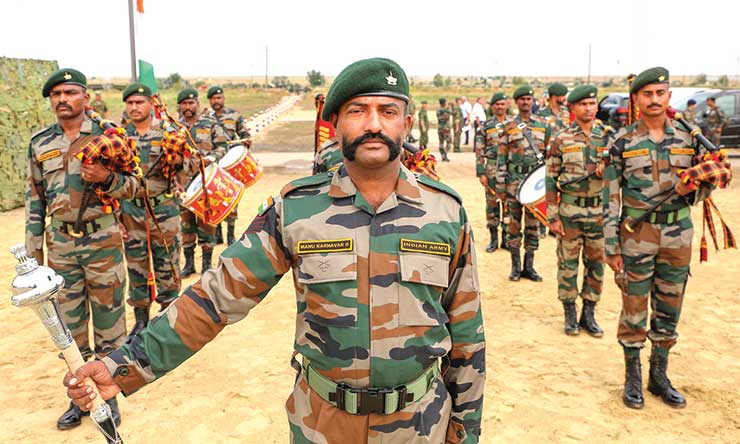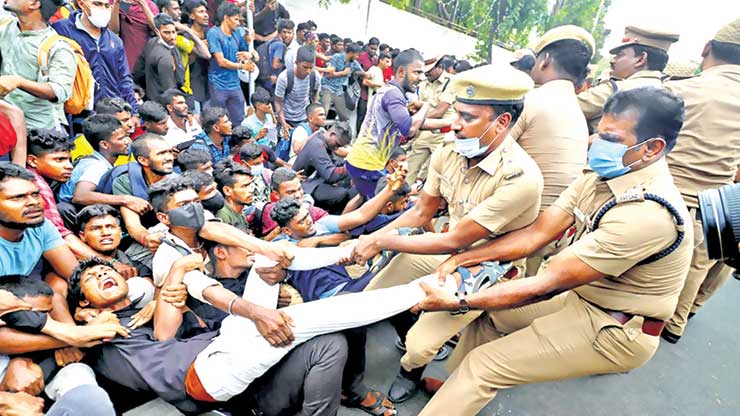
Reforms in the military is a continuous effort taking into account the future threats, changing nature of warfare, the future battlefield environment and the impact of critical and emerging technologies on war-fighting. Military reforms need to be synonymous with Revolution in Military Affairs (RMA), best defined as: “A major change in the nature of warfare brought about by the innovative application of technologies, which combined with dramatic changes in military doctrine and operational concepts, fundamentally alters the character and conduct of operations.”
Military reforms or transfor-mation must have a political direction, a holistic defence review and timed plans (short, medium and long-term) to effect changes in the military in terms of doctrine, organization, technology, training, tactics, man-machine mix and force application. But, military reforms in India are hiccupping away—and can be best described as an exercise in ‘ad-hocism’.
75 years after Independence, we still do not have a National Security Strategy (NSS). HQ Integrated Defence Staff (IDS) gave presentations to two different NSAs on how military can help draft NSS but they were uninterested.
The present NSA, tasked to define the NSS in 2019, has failed to produce—possibly because NSS would imply accountability of policy makers and the blame cannot be deflected to the military when setbacks occur.
Political directions cannot be limited to the need to integrate, which even the then Prime Minister told the Combined Commanders Conference on October 25, 2004. The US and German militaries transformed holistically through the Goldwater-Nichols Act and the Berlin Decree respectively. India needs an Act of Parliament to transform its military, which can be drafted by the NSCS, HQ IDS or a Think-Tank. But with the focus of the policy makers on votes and elections, we don’t even have a NSS.
A Comprehensive Defence Review (CDR) would have told us that one Division (which also feeds manpower for the Northern Glacier) defending 800 km of frontage is fraught with dangers. But no CDR has been done.
From NSS and CDR should flow the military doctrine, organizational changes, equipping and the like. That is why the mad rush took place to import weapons and upgrade our own defence industry when China kicked us in Ladakh during 2020. Without NSS and CDR, defence procurement will continue to remain adhoc, and so will military reorganization and modernization.
The call for self-sufficiency in defence is correct but issuing periodic lists banning import of items without taking into account indigenous capacity and timeframe in which requirements of Armed Forces would be met is only seeking political plaudits.
Under the much publicised Strategic Partnership (SP) model to boost indigenous production through tie-ups with foreign armament majors, not a single project has taken off under the ‘Make in India’ policy till now though Ministry of Defence (MoD) had identified new-generation submarines and helicopters to advanced fighters and futuristic main battle tanks (MBTs) as long-term joint ventures under this model.
Arms industries in countries with modern armies are private sector-based, exception being communist countries like China where inefficiency and corruption is severely punished. Our Ordnance Factory Board and 41 Ordnance Factories should have been privatized instead of converting to public sector undertakings under the same leadership, work force and work culture for the sake of votes.
For the same reason, large parts of the Defence Research and Development Organization (DRDO) need to be privatized. Isn’t it ironic that after so many years, we have not been able to build indigenous aero-engines, gas turbine engines for our naval vessels and our ammunition production and metallurgy is just about satisfactory.
Appointment of a CDS heading the Department of Military Affairs (DMA) was a bureaucratic masterstroke: merging HQ IDS with MoD was killing; seniority of service chiefs to secretary-level officers was brought down; all power, capital acquisitions and policy (in no-war-no-peace and war) remained with the defence secretary; CDS became military advisor to the Defence Minister (instead of Prime Minister/government) to whom Service Chiefs also have direct access; DMA was crammed with bureaucrats with the CDS reduced to do whatever bureaucrats said.

The government has now enlarged the scope of selecting the next CDS by also including serving Lieutenant Generals. Media has reported that the posts of CDS and Secretary DMA may be separated, which may imply a bureaucrat as Secretary, DMA, further degrading the CDS.
Bureaucrats have successfully retained their predominance in the government, with politicians being dependent on them. The half-hearted experiment of the present government to induct JS-level officers into some ministries (with MoD) untouched) was more of a PR exercise, knowing they must follow the two layers of IAS above them.
The CCS note under which HQ IDS was established on November 23, 2001, read: “As and when the CDS is appointed, he will have equal voting rights as Service Chiefs and in case two Service Chiefs disagree, MoD (read bureaucrats) will arbitrate.” This killed the CDS being a single-point advisor to the government.
India has two nuclear-armed hostile neighbours and the entire length of the border with China will need to be manned throughout. There have been calls for a long time to reduce the strength of the Army by application of technology. But all the technology that was inducted, barring a few drones, are those that don’t match the equipment of the PLA.
Preceding the announcement of Tour of Duty (ToD) or ‘Agnipath’ scheme recruitment in the military, the deafening propaganda about high defence-pensions budget made no mention of expenditure on the seven lakh civilian-defence employees—all enjoying non-functional upgradation (NFU) allowance while serving, all retiring in HAG/HAG+ grade and One Rank One Pension (OROP) thereafter.
‘Agnipath’ will induct soldiers in the military with six-month training to serve for four years. The main reason behind this is fiscal savings, not one paisa of which will come to the defence budget.
The irony is that an Army Chief had proposed the ToD, which is now being executed in full force, replacing regular recruitment, with 46,000 to be recruited shortly. The logic of younger profile obfuscates that they will enter service with six-months training and it takes one-two years to be fully trained. This, alongwith the annual and casual leaves in four years will leave his/her employability to just two years plus. It should also be recalled that two years back a proposal to ‘raise’ the retirement age in the military was also under discussion.
Agnipath’ will adversely impact combat effectiveness at the cutting-edge. Moreover, from the public briefing on June 14, it is apparent that the government wants to do away with the Army’s regimental system, which is the bedrock of fighting arms especially in Infantry and the Armoured Corps.
Policeisation of the military will blunt the military’s steel edge. Moreover, with 75 percent soldiers released after four years without ‘assured’ jobs has pitfalls which is only being addressed through random statements.
Speaking at Mussoorie on June 13, Defence Minister Rajnath Singh said India must be prepared for full-scale-war in future. But we don’t seem to have an answer to Pakistan’s proxy war other than killing terrorists in our own territory. When will we reply to Pakistan in the same coin? As for military reforms, these will likely continue hiccuping.
-The writer is a veteran of Indian Army. The views expressed are personal and do not necessarily reflect the views of Raksha Anirveda








